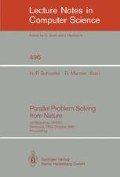Abstract
Sensitization and habituation, we postulate, both serve the adaptive function of cluster-tracking: entraining and exploiting the basic spatio-temporal regularities in the environment. To better understand the adaptive pressures shaping cluster-tracking, we used a genetic algorithm to evolve simulated creatures controlled by neural networks. The creatures make decisions about when to eat in simple simulated environments containing ‘food’ (which raises fitness) and ‘poison’ (which lowers it) based on sensory cues. Food and poison were distributed in randomly-occurring clusters of a certain scale fixed for each environment. Sensory input had a limited accuracy level fixed for each environment. When sensory accuracy is moderate and food and poison come in fairly large clusters, certain time-delay feedback connections evolve to allow cluster-tracking. We ran several simulations for each of 6 cluster-scales and each of 7 levels of sensory accuracy. As expected, the average number of generations required to evolve cluster-tracking follows a U-shaped curve as a function of sensory accuracy, and generally declines as cluster scale increases. But an asymmetry in this ravine-like surface illuminates some previously unsuspected complexities of sensitization and habituation.
Preview
Unable to display preview. Download preview PDF.
References
Hollis, K.L. (1984). Cause and function of animal learning processes. In P. Marler and H.S. Terrace, eds. The biology of learning. New York: Springer-Verlag.
Miller, G.F., and Todd, P.M. (1990). Exploring adaptive agency I: Theory and methods for simulating the evolution of learning. In D.S. Touretzky, J.L. Elman, T.J. Sejnowski, and G.E. Hinton, eds. Proceedings of the 1990 Connectionist Models Summer School (pp. 65–80). San Mateo, CA: Morgan Kaufmann.
Miller, G.F., Todd, P.M., and Hegde, S.U. (1989). Designing neural networks using genetic algorithms. In J.D. Schaffer, ed. Proceedings of the Third International Conference on Genetic Algorithms (pp. 379–384). San Mateo, CA: Morgan Kaufmann.
Todd, P.M., and Miller, G.F. (1990). Exploring adaptive agency II: Simulating the evolution of associative learning. In S. Wilson and J.-A. Meyer, eds. Proceedings of the International Conference on Simulation of Adaptive Behavior: From Animals to Animats. Cambridge, MA: MIT Press/Bradford Books.
Wells, M. (1968). Lower animals. New York: McGraw-Hill.
Author information
Authors and Affiliations
Editor information
Rights and permissions
Copyright information
© 1991 Springer-Verlag Berlin Heidelberg
About this paper
Cite this paper
Todd, P.M., Miller, G.F. (1991). Exploring adaptive agency III: Simulating the evolution of habituation and sensitization. In: Schwefel, HP., Männer, R. (eds) Parallel Problem Solving from Nature. PPSN 1990. Lecture Notes in Computer Science, vol 496. Springer, Berlin, Heidelberg. https://doi.org/10.1007/BFb0029769
Download citation
DOI: https://doi.org/10.1007/BFb0029769
Published:
Publisher Name: Springer, Berlin, Heidelberg
Print ISBN: 978-3-540-54148-6
Online ISBN: 978-3-540-70652-6
eBook Packages: Springer Book Archive

